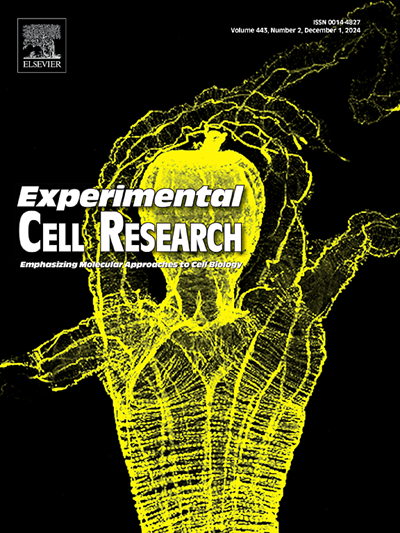NRF-1 promotes FUNDC1-mediated mitophagy as a protective mechanism against hypoxia-induced injury in cardiomyocytes
IF 3.3
3区 生物学
Q3 CELL BIOLOGY
引用次数: 0
Abstract
Hypoxia-induced apoptosis and mitochondrial dysfunction in cardiomyocytes are involved in the mechanisms of heart failure. Our previous studies have confirmed that NRF-1 alleviates hypoxia-induced injury by promoting mitochondrial function and inhibiting apoptosis in cardiomyocytes. However, the mechanism by which NRF-1 attenuates hypoxia-induced injury in cardiomyocytes is still unclear. Mitophagy, a selective autophagy, has recently shown a remarkable correlation with hypoxia-induced cardiomyocyte injury. In this study, we evaluated whether NRF-1 protects cardiomyocytes from hypoxia-induced injury by regulating mitophagy. The findings indicate that hypoxia prevents H9c2 cells from growing, encourages mitochondrial dysfunction, and triggers mitophagy. In addition, promoting mitophagy by rapamycin reduces hypoxia-induced injury in H9c2 cells. Overexpression of NRF-1 in hypoxia-induced H9c2 cells promotes mitophagy and alleviates cell injury, and this effect can be inhibited by 3-MA. Further study found that NRF-1 promotes the expression of FUNDC1 by binding to its promoter region. Knockdown of FUNDC1 in NRF-1 over-expression H9c2 cells inhibited mitophagy and aggravated hypoxia-induced injury. In conclusion, our study suggests that NRF-1 protects against hypoxia-induced injury by regulating FUNDC1-mediated mitophagy in cardiomyocytes.
NRF-1促进fundc1介导的线粒体自噬,作为缺氧诱导心肌细胞损伤的保护机制
缺氧诱导心肌细胞凋亡和线粒体功能障碍参与心衰的机制。我们之前的研究证实,NRF-1通过促进线粒体功能和抑制心肌细胞凋亡来减轻缺氧诱导的心肌损伤。然而,NRF-1减轻缺氧诱导心肌细胞损伤的机制尚不清楚。线粒体自噬,一种选择性自噬,最近被证明与缺氧诱导的心肌细胞损伤有显著的相关性。在这项研究中,我们评估了NRF-1是否通过调节线粒体自噬来保护心肌细胞免受缺氧诱导的损伤。研究结果表明,缺氧会阻止H9c2细胞生长,促进线粒体功能障碍,并引发线粒体自噬。此外,雷帕霉素促进线粒体自噬可减少缺氧诱导的H9c2细胞损伤。缺氧诱导的H9c2细胞过表达NRF-1可促进有丝分裂,减轻细胞损伤,3-MA可抑制这一作用。进一步研究发现,NRF-1通过结合FUNDC1的启动子区促进FUNDC1的表达。NRF-1过表达H9c2细胞中FUNDC1的下调抑制了线粒体自噬,加重了缺氧引起的损伤。总之,我们的研究表明NRF-1通过调节fundc1介导的心肌细胞线粒体自噬来保护缺氧诱导的损伤。
本文章由计算机程序翻译,如有差异,请以英文原文为准。
求助全文
约1分钟内获得全文
求助全文
来源期刊

Experimental cell research
医学-细胞生物学
CiteScore
7.20
自引率
0.00%
发文量
295
审稿时长
30 days
期刊介绍:
Our scope includes but is not limited to areas such as: Chromosome biology; Chromatin and epigenetics; DNA repair; Gene regulation; Nuclear import-export; RNA processing; Non-coding RNAs; Organelle biology; The cytoskeleton; Intracellular trafficking; Cell-cell and cell-matrix interactions; Cell motility and migration; Cell proliferation; Cellular differentiation; Signal transduction; Programmed cell death.
 求助内容:
求助内容: 应助结果提醒方式:
应助结果提醒方式:


